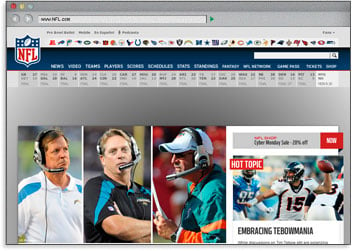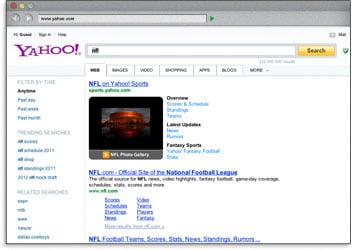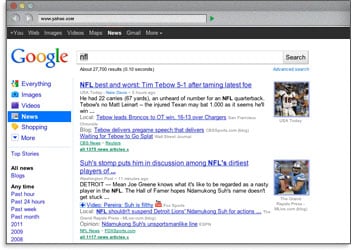Search Engine Friendly Development: Title Tags
Part 4 of our 8-part series on developing search engine friendly website structures. This was originally written by Rand Fishkin and Moz Staff, and posted on posted Moz. Image courtesy Wikimedia Commons.
The title element of a page is meant to be an accurate, concise description of a page’s content. It is critical to both user experience and search engine optimization.
As title tags are such an important part of search engine optimization, the following best practices for title tag creation makes for terrific low-hanging SEO fruit. The recommendations below cover the critical steps to optimize title tags for search engines and for usability.
Be mindful of length
Search engines display only the first 65-75 characters of a title tag in the search results (after that, the engines show an ellipsis – “…” – to indicate when a title tag has been cut off). This is also the general limit allowed by most social media sites, so sticking to this limit is generally wise. However, if you’re targeting multiple keywords (or an especially long keyword phrase), and having them in the title tag is essential to ranking, it may be advisable to go longer.
Place important keywords close to the front
The closer to the start of the title tag your keywords are, the more helpful they’ll be for ranking, and the more likely a user will be to click them in the search results.
Include branding
At Moz, we love to end every title tag with a brand name mention, as these help to increase brand awareness, and create a higher click-through rate for people who like and are familiar with a brand. Sometimes it makes sense to place your brand at the beginning of the title tag, such as your homepage. Since words at the beginning of the title tag carry more weight, be mindful of what you are trying to rank for.
Consider readability and emotional impact
Title tags should be descriptive and readable. The title tag is a new visitor’s first interaction with your brand and should convey the most positive impression possible. Creating a compelling title tag will help grab attention on the search results page, and attract more visitors to your site. This underscores that SEO is about not only optimization and strategic keyword usage, but the entire user experience.

The title tag of any page appears at the top of Internet browsing software, and is often used as the title when your content is shared through social media or republished.

Using keywords in the title tag means that search engines will bold those terms in the search results when a user has performed a query with those terms. This helps garner a greater visibility and a higher click-through rate.

The final important reason to create descriptive, keyword-laden title tags is for ranking at the search engines. In Moz’s biannual survey of SEO industry leaders, 94% of participants said that keyword use in the title tag was the most important place to use keywords to achieve high rankings.


